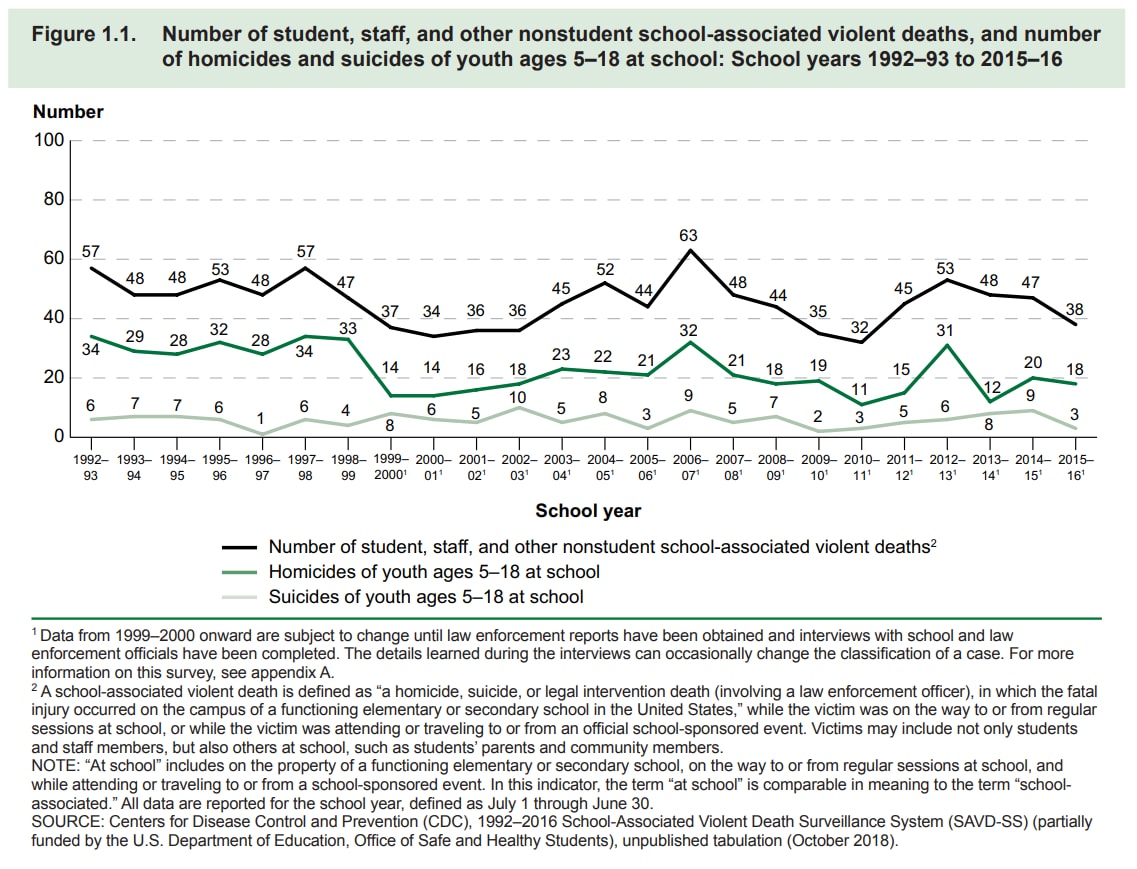What to know
Homicide is the second leading cause of death among youth aged 5-18 years old. Less than 2% of these homicides occur on school grounds, on the way to or from school, or at or on the way to or from a school-sponsored event. Data from the School-Associated Violent Death Surveillance System play an important role in assessing national trends in school-associated violent deaths and helping inform efforts to prevent fatal school violence.
Overview
The School-Associated Violent Death Surveillance System (SAVD-SS) monitors school-associated violent deaths across the U.S. Information is collected each year from media databases and law enforcement officials. SAVD-SS presents the most recent data available on:
- School-associated violent deaths.
- Common features of these events.
- Risk factors for perpetration and victimization.
Key findings
Case definition
A case is defined as a violent death (i.e., homicide, suicide, or legal intervention) that occurs on school property, on the victim’s way to or from school, or at or on the victim’s way to or from a school-sponsored event. Violent deaths associated with functioning United States primary and secondary schools, both public and private, are included in the surveillance system.
Major findings
About 90% of school-associated youth homicide incidents from 1994-2016 involved only one victim. Multiple-victim incidents accounted for only 10% of all school-associated youth homicide incidents from 1994-2016, but involved a disproportionate number of all youth homicide victims (18.6%) during this time.
Single-victim school-associated homicides are similar to youth homicides unrelated to schools, often involving male, racial/ethnic minority victims, and occurring in urban settings. While single-victim school-associated youth homicide rates remained stable from 1994–2016, multiple-victim school-associated youth homicide incidence rates increased significantly from July 2009 to June 2018.
From 1994-2018, 95% of multiple-victim school-associated youth homicides were caused by firearm-related injuries. Firearms used in school-associated homicides and suicides came primarily from the perpetrator’s home or from friends or relatives.
Nearly 50% of homicide perpetrators gave some type of warning signal, such as making a threat or leaving a note, before the event.
These findings underscore the importance of preventing violence at school as well as in communities.

